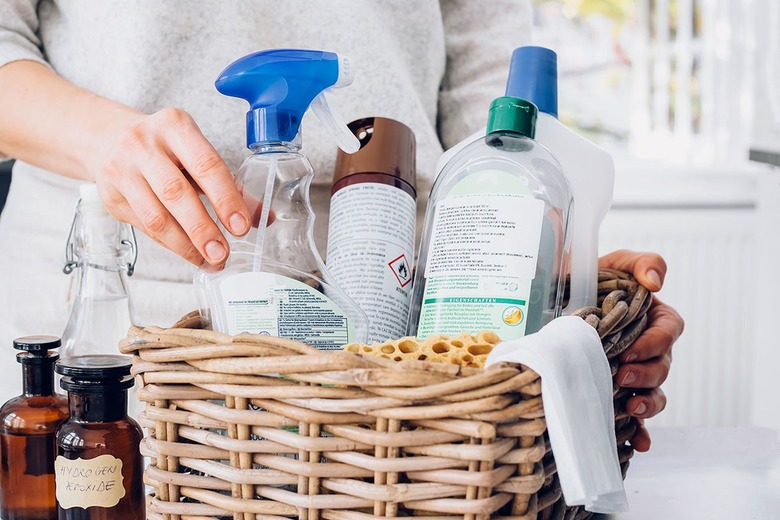Can You Mix Clorox Bleach With Vinegar For A Cleaning Solution?
Bleach and vinegar are effective cleaning agents when used separately. Although bleach is a strong disinfectant, and vinegar dissolves mineral deposits and kills many types of mold, fungi and bacteria, combining the two can be dangerous. Mixing bleach with an acid such as vinegar creates chlorine gas, a toxic chemical that can be deadly at high levels.
Harmful Effects
Harmful Effects
Chlorine gas fumes smell like very strong bleach. Even in low amounts the gas causes eye and skin irritation, as well as a variety of respiratory and other symptoms such as nose and throat irritation, bronchial irritation, coughing, breathing difficulty, headache, dizziness and nausea. Exposure can result in more severe effects including pneumonia, loss of consciousness and death. To help reduce the risk of noxious fumes, provide good ventilation when you use any cleaners.
Combining Chemicals
Combining Chemicals
Bleach is also dangerous when combined with other common chemicals and household cleaning products including ammonia, hydrogen peroxide, oven cleaner, drain cleaner and some detergents. Keep all cleaners in their original, labeled containers, and read the manufacturer's instructions and cautions carefully before use.
Dilution Solution
Dilution Solution
Bleach is safest when diluted with cool or warm water — hot water can release chlorine gas. For general household cleaning and disinfecting with a minimum of fumes, dilute bleach at a 1:100 ratio, or 2 teaspoons bleach per gallon of water. You may wish to rinse surfaces after cleaning them with bleach. To make a safe and effective glass cleaner, mix about one cup of vinegar per gallon of water. You can safely increase the vinegar ratio to suit the grime.
